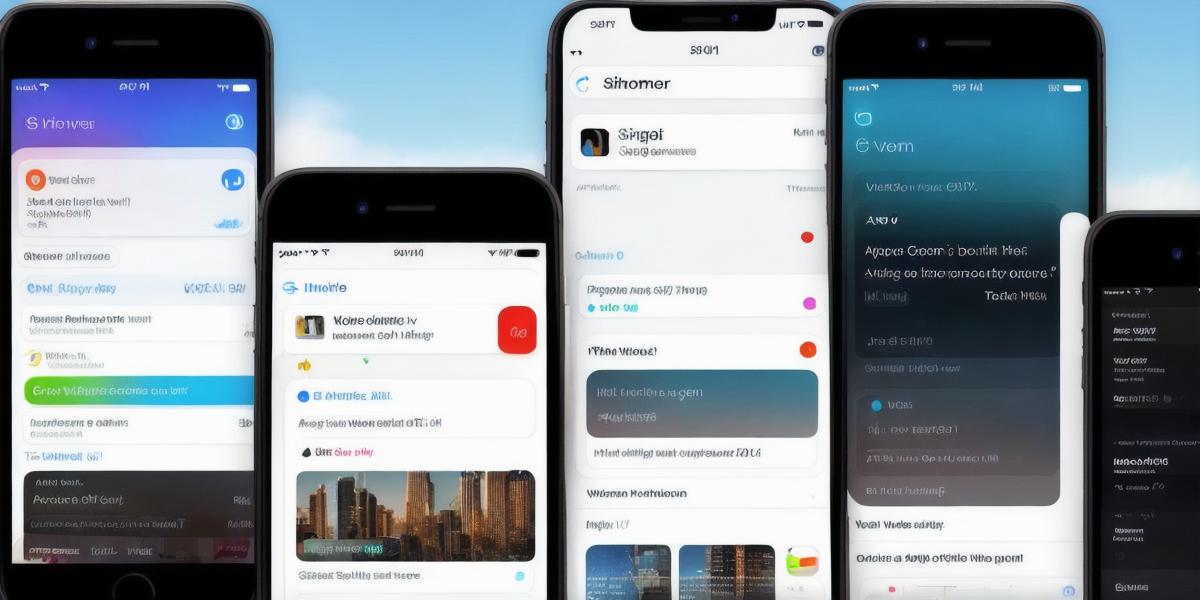Voice Assistants and Machine Learning: A Case Study on Siri’s Evolution

Voice assistants have become an integral part of our daily lives, providing us with quick answers to our queries, setting reminders, and even helping us control smart home devices. But have you ever wondered how these virtual assistants work? The answer is simple: machine learning. In this article, we will explore the use of machine learning in voice assistants, specifically Siri, Apple’s flagship digital assistant.
Machine Learning 101:
Before we dive into Siri’s evolution, let’s first understand what machine learning is. Machine learning is a subset of artificial intelligence that enables computers to learn from data without being explicitly programmed. It allows machines to improve their performance on a task over time by using algorithms that can recognize patterns in data.
Siri and Machine Learning:
Now, let’s see how Siri uses machine learning to provide users with an intuitive and personalized experience. The first version of Siri, which was introduced in 2011, relied heavily on pre-programmed responses. However, the more recent versions of Siri have evolved to become more intelligent and adaptive, thanks to machine learning algorithms that allow it to learn from user behavior.
Case Study: Personalized Responses
One example of how Siri uses machine learning is its ability to provide personalized responses. By analyzing a user’s search history and preferences, Siri can tailor its responses to suit the individual’s needs. For instance, if you frequently ask Siri for restaurant recommendations in your area, it may start suggesting local eateries that match your taste preferences.
Improved Accuracy:
Machine learning also allows Siri to improve its accuracy over time. As more users interact with Siri, the system can learn from their queries and refine its responses accordingly. For example, if a user frequently asks Siri how to get to a particular location, the system may start providing more accurate directions based on real-time traffic data.
Real-Life Examples:
Let’s look at some real-life examples of how Siri uses machine learning to improve its performance. In one case, a user asked Siri for directions to a nearby store. Based on the user’s previous searches and location data, Siri suggested the most convenient route, taking into account real-time traffic conditions.
In another example, a user asked Siri to set a reminder for their daughter’s soccer game tomorrow at 3 pm. By analyzing the user’s search history and preferences, Siri recognized that this was an important event for the user and reminded them multiple times throughout the day to ensure they didn’t forget.
The Future of Voice Assistants:
As voice assistants continue to evolve, we can expect to see even more advanced machine learning capabilities. For example, voice assistants may be able to understand and respond to natural language queries more accurately, recognize contextual clues, and even learn from user emotions.
Conclusion:
In conclusion, voice assistants like Siri use machine learning to provide users with a personalized and intuitive experience. By analyzing user behavior and preferences, these virtual assistants can improve their accuracy and adapt to individual needs. As the technology continues to advance, we can expect to see even more impressive capabilities in the future.
FAQs:
- How does machine learning enable voice assistants like Siri?
Machine learning allows voice assistants to learn from data without being explicitly programmed, enabling them to improve their performance over time based on user behavior and preferences.
- What are some examples of how Siri uses machine learning to provide personalized responses?
Siri analyzes a user’s search history and preferences to tailor its responses to suit the individual’s needs. For example, if you frequently ask Siri for restaurant recommendations in your area, it may start suggesting local eateries that match your taste preferences.
- How does Siri improve its accuracy over time?
Siri improves its accuracy over time by analyzing user queries and refining its responses accordingly. For example, if a user frequently asks Siri for directions to a particular location, the system may start providing more accurate directions based on real-time traffic data.








